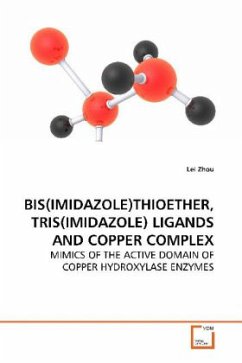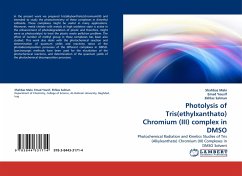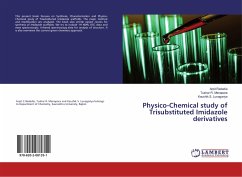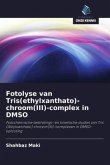The focus of this research project is to synthesize
novel bis(imidazole)thioether and tris(imidazole)
tripodal ligands and develop new model complexes
that more accurately mimic structural and reactivity
features of the active sites of copper hydroxylase
enzymes.
New sterically hindered tris(imidazole) tripodal
ligands were prepared to mimic the coordination
environment of CuA active site. Copper(I)
derivatives of the tris(imidazole) ligands exhibit
modest dioxygen reactivity.
Novel 2-tethered sterically hindered bis(imidazole)
thioether tripodal ligands were prepared to provide
the same (imidazole)2(thioether) ligand set as the
CuB binding site of the copper hydroxylase enzymes.
These complexes exhibit several close parallels with
the CuB site of the enzymes.
More biomimetically accurate 4-tethered bis
(imidazole)thioether ligands and their copper
complexes that incorporate the ligand set of the CuB
site of the copper hydroxylase enzymes have been
prepared and characterized. The imidazole-based
substituent variations on the BIT ligands can have
important effects on the oxygenation and
electrochemical oxidation of corresponding copper(I)
complexes.
novel bis(imidazole)thioether and tris(imidazole)
tripodal ligands and develop new model complexes
that more accurately mimic structural and reactivity
features of the active sites of copper hydroxylase
enzymes.
New sterically hindered tris(imidazole) tripodal
ligands were prepared to mimic the coordination
environment of CuA active site. Copper(I)
derivatives of the tris(imidazole) ligands exhibit
modest dioxygen reactivity.
Novel 2-tethered sterically hindered bis(imidazole)
thioether tripodal ligands were prepared to provide
the same (imidazole)2(thioether) ligand set as the
CuB binding site of the copper hydroxylase enzymes.
These complexes exhibit several close parallels with
the CuB site of the enzymes.
More biomimetically accurate 4-tethered bis
(imidazole)thioether ligands and their copper
complexes that incorporate the ligand set of the CuB
site of the copper hydroxylase enzymes have been
prepared and characterized. The imidazole-based
substituent variations on the BIT ligands can have
important effects on the oxygenation and
electrochemical oxidation of corresponding copper(I)
complexes.








